Automotive Industry Climate Index
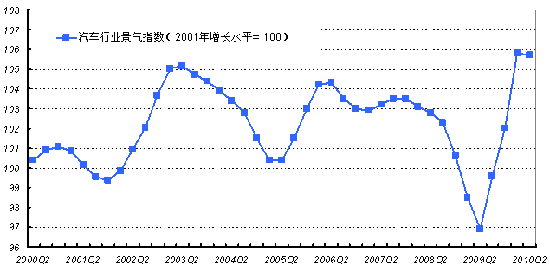
In the second quarter of 2010, the automobile industry sentiment index was 105.7 points (2001 growth level = 100), which was a decrease of 0.1 points compared with the previous quarter. The prosperity index ended the three consecutive quarters of recovery and saw a slight decline. Six indicators that constitute the boom index of the automotive industry: The investment in fixed assets in the automotive industry has increased, and the five indicators of the total profit, sales, employees, total taxes, and total exports of the automotive industry have been compared to the previous quarter. decline.
The data shows that the sustained effects of the inertia and favorable policies of high growth last year have enabled the steady growth of the automotive industry to continue. After China's autos went through the “blowout†in 2009, the market growth rate gradually returned to the track of sustainable growth in 2010. In the second quarter of 2010, the automobile market was driven by both policy stimulus and economic growth. Production and sales continued the good development trend, economic performance continued to improve, and the industry economy remained at a relatively high level.
Automotive Industry Warning Index
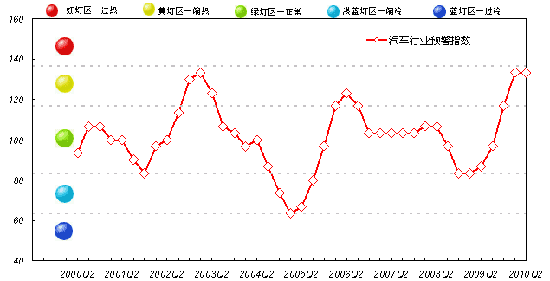
In the second quarter of 2010, the early-warning index of the automotive industry, which reflected the degree of coldness and heat in the auto industry, was 133.3, which was in line with the previous quarter. It was still in the yellow light district and ended the four consecutive quarters upward trend, indicating that the auto industry has recovered at a solid pace. The operation of the industry has further stabilized.
Automotive Industry Warning Signal
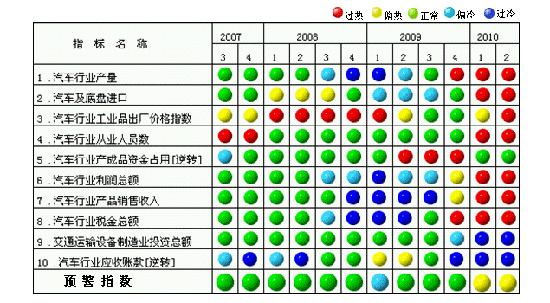
In the second quarter of 2010, the warning signs of the automotive industry continued to operate in the "Yellow Light District," and the auto industry is still in the "hot" region.
Among the 10 indicators that constitute the index system of the early warning index for the automobile industry (adjusted for seasonal and random factors), there are 7 indicators in the “red light district†in the second quarter of 2010 – the output of the automobile industry, the imports of automobile and automobile chassis. , the automobile industry ex-factory price index, the number of employees in the automotive industry, the total profit of the automotive industry, automotive industry sales revenue and auto industry tax total; is located in the "green light zone" has a target - the automotive industry finished product funds (reversal There are two indicators located in the "Blue Light District" - the total fixed asset investment in the automotive industry and the auto industry accounts receivable (reversal).
According to preliminary judgment, in the next quarter, the growth rate of accounts receivable in the auto industry will continue to accelerate; the auto industry output, and the use of funds for finished goods [reverse], total profit, product sales revenue, total taxation, and investment in transportation equipment manufacturing The total growth rate may fall; the automobile and automobile chassis imports, the automobile industry ex-factory price index, and the number of employees will increase.
It is expected that in the next quarter, the automotive industry’s ex-factory price index and auto industry product sales revenue are expected to change from “red light†to “yellow lightâ€. Other indicator lights are expected to remain unchanged, and the warning signs for the automotive industry will continue to be in the “Yellow Light Districtâ€. "run.
Automotive industry entrepreneur confidence index
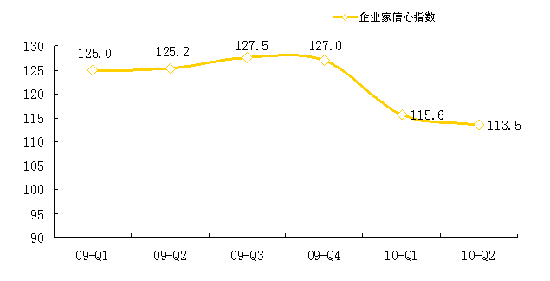
In the second quarter of 2010, the automotive industry's entrepreneur confidence index was 113.5, which was a decrease of 2.1 compared with the first quarter. Entrepreneur confidence in the auto market continued to fall, but the confidence index was still above 100. Entrepreneurs were basically satisfied with the current situation. The auto market trend in the third quarter is still optimistic.
Automotive dealership manager index
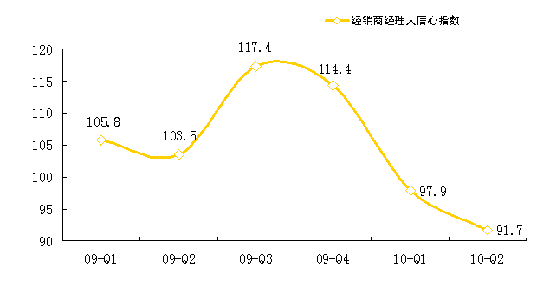
In the second quarter of 2010, the dealership index for the automotive industry was 91.7. The index was below 100 for two consecutive months, which was a decrease of 6.2 compared with the previous quarter, reflecting that the managers of the dealers were significantly less confident in the off-season sales season.
Regional Automotive Dealer Manager Index
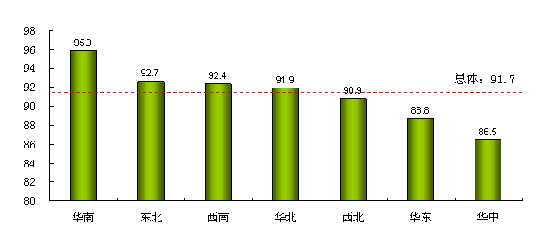
In the second quarter of 2010, the dealership index for the automotive industry was 91.7. In terms of sub-regions, the highest confidence index in southern China is only 95.9, the Northeast is ranked second, and the Southwest is ranked third, while the East China and Central China distributors are ranked in the last two, both under 90. It is 88.8 and 86.5 respectively.
Compared with the first quarter of 2010, the dealer manager's index still showed a downward trend, and each regional confidence index showed a different range of decline. Among them, the managerial index of dealers in the two regions of Southwest China and Central China dropped more, with a drop of nearly 10 percentage points. Compared with the first quarter, the confidence index in South China decreased by a relatively small 2.4%.
Epoxy resin is a kind of polymer material with high performance. It is a two-component system composed of epoxy group and amine group, which forms polymer compound by mixing and reaction. It has strong adhesive force, corrosion resistance, heat resistance, electrical insulation and mechanical strength, and is widely used in aviation, aerospace, automotive, construction, electronics, ships and other fields.
The preparation process of epoxy resin is to mix epoxy resin monomer and amine Curing Agent in a certain proportion, and react at a certain temperature to form a polymer compound. Epoxy resins with different properties can be obtained by changing the type of monomer, the type and proportion of curing agent.
The advantage of epoxy resin is that its properties can be adjusted according to needs, and materials with high strength, high stiffness, high toughness, high temperature resistance, corrosion resistance and other characteristics can be prepared. Because of its excellent properties, epoxy resins are widely used in various fields. For example, in the aerospace field, epoxy resins are used in the manufacture of aircraft and rocket structural parts, composites, coatings and adhesives; In the automotive field, epoxy resins are used in the production of automobile body and engine parts; In the field of construction, epoxy resins are used in coatings, floors, waterproof materials and so on.
In addition, carbon fiber reinforced epoxy resin composites are also one of the most widely used epoxy resin products at present. Carbon fiber reinforced epoxy resin composites have the advantages of high strength, high modulus and low density, and are widely used in aviation, aerospace, automobile, sporting goods and other fields.
In general, epoxy resin is a high-performance material with a wide range of application prospects, and its properties can be adjusted according to needs, and it is widely used in various fields.
Epoxy Resins,Crystal Clear Epoxy Resin,Hardener Epoxy Resin,Liquid Epoxy Resin
Shanghai Shengduan Trading Co., Ltd. , https://www.sdcuringagent.com
